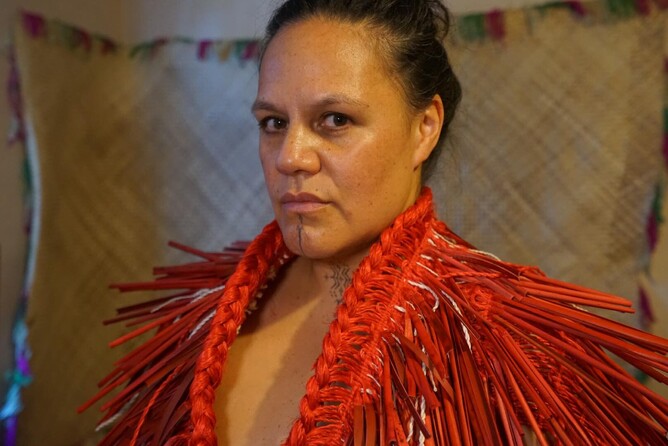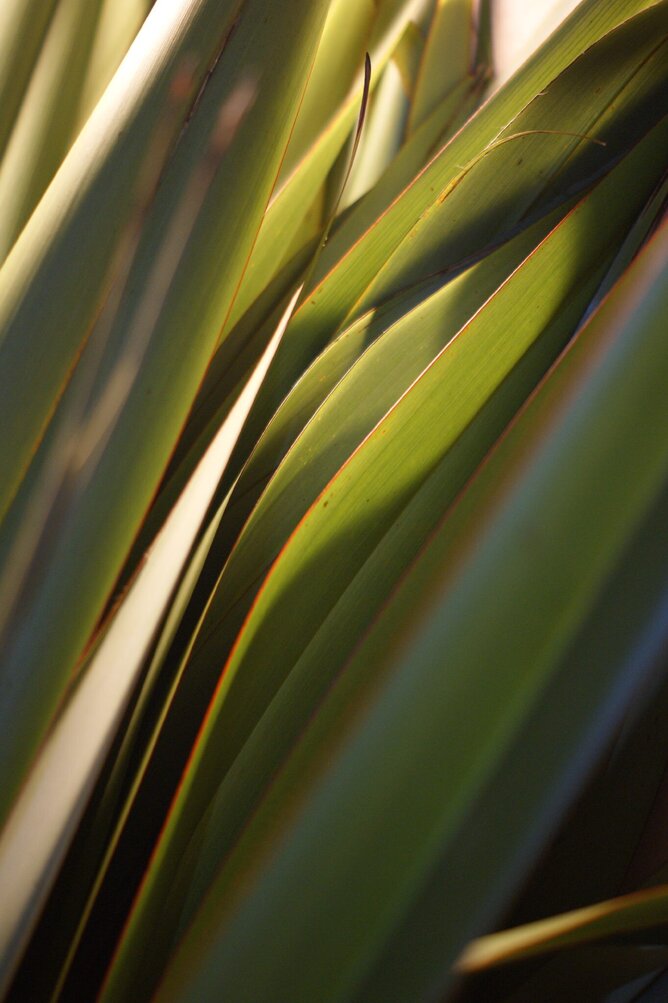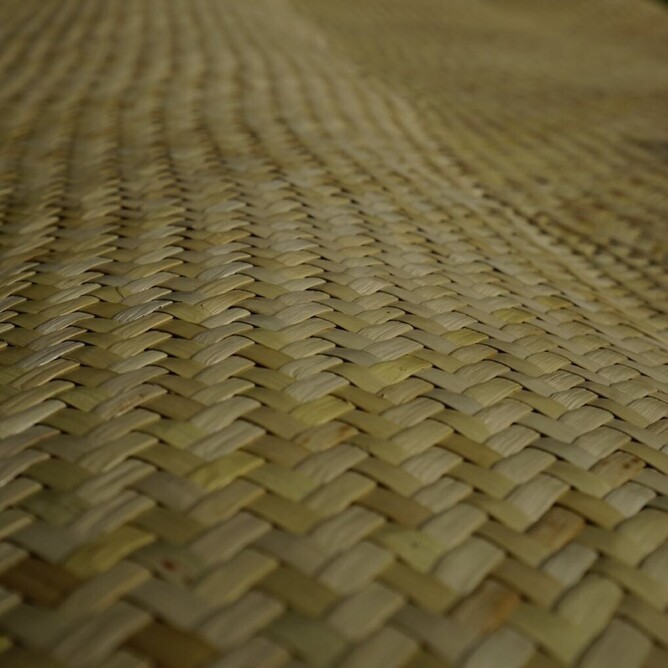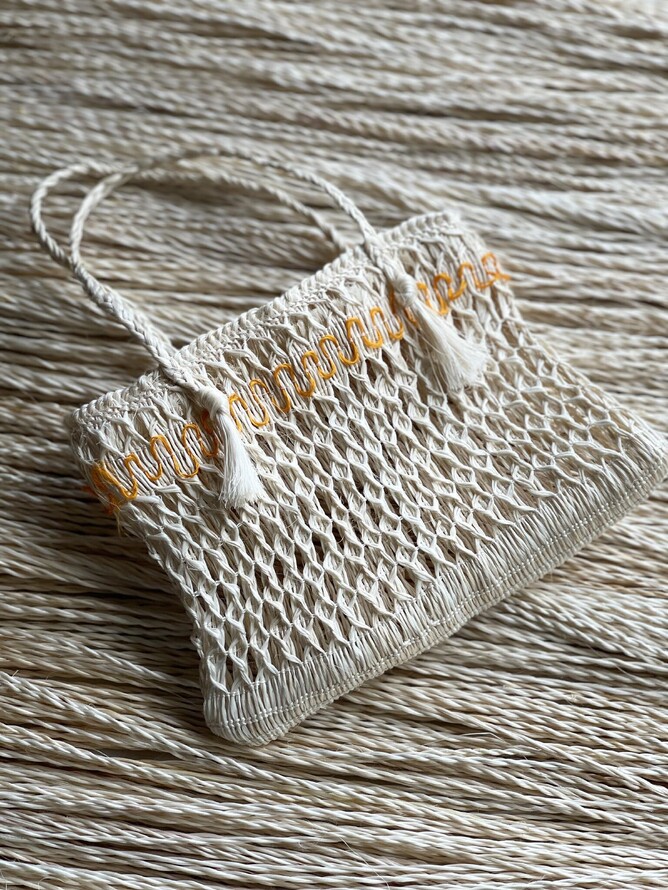Sustainable Art - Raranga
Sustainability begins with the artist, and for art-making to be truly sustainable all the processes, practices and logistics that lead to the final artwork have to be low impact. Indigenous artists have traditionally authentically engaged with sustainability by using the natural materials and low impact art practices inherent in their cultures.
Contemporary artists practicing indigenous art forms like Raranga, (plaiting or hand weaving without a loom) using harakeke in New Zealand, are part of an indigenous art revival that inherits ancient art processes thousands of years old. Raranga is an authentic sustainable art genre which uses the most natural of all ethically sourced New Zealand materials, harakeke, and the lowest impact art practices to produce beautiful refined art that genuinely resonates with the sustainability ethos. Rather than taking advantage of the sustainability trend, traditional Raranga artists have always been genuinely committed to sustainability, incorporating it into every stage of their artistic process.
I first met Raranga Kiako Amber Fonua at Auckland Botanical gardens in Manurewa. A tutor at Te Wananga O Aotearoa Mangere campus, she took her first class of 2023 at the Manurewa Botanical Gardens in March because the campus had been flooded in February. With no classroom due to flooding she taught at the gardens in the open air. What a privilege those first Raranga lessons were. Manurewa Botanical Gardens has a Pa Harakeke, an extensive garden devoted exclusively to harakeke cultivars collected from all over New Zealand. We got to examine each cultivar, its growth pattern, its leaves, their shape, texture, different colours, and understand why its unique properties made it suitable for muka or weaving. So many factors go into weaving different objects of art, with each cultivar contributing unique properties to the fibre quality and aesthetic quality of its final product.
That first lesson gave me a huge appreciation of how important harakeke was in traditional Maori culture. Harakeke was used for medicine, as ointment, as a cosmetic skin treatment, for food, for cloaks, for clothing, for shoes, to make massive sails for ocean bearing Waka, as walls and floors and lashings for housing, to make traps to catch animals and nets for fishing, to make kete, containers for carrying babies and food, even for toys, and poi, and fibre for string games. Maori civilization depended on harakeke for survival.
When Europeans colonised New Zealand they planted harakeke plantations of thousands of acres, constructing mills that allowed them to process and export its fibre all over the world to became a major export earner up until 1970. Harakeke is the most amazing plant and I fell head over heels in love with it. I love plants, but harakeke I have learned is an incredibly special plant.
As part of the Te Wananga O Aotearoa Raranga syllabus Amber taught us how to correctly harvest the plant in traditional ways using the least wasteful methods, taking utmost care of the plant to preserve it as a natural resource and respect it. Te Wananga O Aotearoa Raranga classes teach weavers to pursue zero waste practices and have full control over their choice of ethically sourced material. Each art work created out of harakeke is an investment of time, created by hand sustainably, using traditional slow manual methods of working to produce fine, sophisticated works of art.
As sustainability becomes a powerful global movement art collectors are taking sustainable art more seriously, looking at innovative design concepts that have less impact on the environment, favouring sustainable design using natural materials to create artworks of exquisite craftsmanship. Sustainable art has come of age to bridge the gap between aesthetic experience and promoting sustainability.
Alongside teaching for 5 years, Amber has for the last 2 years studied under master weavers in Rotorua culminating in the completion of a full-sized whaariki (woven floor covering) made with over 2500 separately hand crafted whenu (weaving strips created from harakeke). This piece was exhibited alongside other works created by the Te Wananga O Aotearoa's Maunga Kura Toi, Bachelor of Indigenous Art's graduating class of 2023.
As well as the important work of handing down ancestral teachings to a new generation of weavers, Amber is adamant that the practice of indigenous weaving can bring about healing and ongoing well-being for all those that participate.
Her evidence being the experience of remote teaching through New Zealand's lengthy lockdowns and personal experience weaving whaariki during a 10 month working-from-home period, due to the destruction of her workplace in the 2023 flooding in Auckland.
Having studying Raranga with Amber I agree totally that it contributes to well-being and healing. Harvesting and processing the beautiful plant of harakeke gives the weaver a direct connection between the artwork and the earth. Weaving by hand has a natural fluidity with its own organic rhythm. Raranga is visual poetry. Poetry to the hands -when you harvest harakeke you are working with a living entity you must look after, when you touch harakeke, you feel its life force in your hands - it has the most beautiful feeling on your skin; Poetry to your soul and spirit - Raranga is meditative - the rhythm relaxes your mind to start healing your body. When I practise Raranga time disappears, to the extent that one day I wove for 20 hours non-stop before realising how much time I'd spent.
I am grateful Te Wananga O Aotearoa makes free Raranga courses available to New Zealanders, so grateful that contemporary artists teaching at Te Wananga O Aotearoa like Amber Fonua are breathing new life into an ancient art form that links me to my ancestors, and the whakapapa of the earth.
Raranga is an historically important New Zealand art genre that offers limitless possibilities to evoke nature in abstracted designs, where each work of art created is custom made, woven by hand with your fingers not a loom, through slow and sustainable processes. Major artworks created by Raranga are fully sustainable complex and subtle masterpieces that shed new light on new possibilities for traditional natural materials, and expend the concept of sustainable art as part of the future of art.
Come meet Amber at our weekend workshop on March 16th
In our workshop you will learn by demonstration and participation, how to prepare flax/harakeke leaves, and the skills of weaving with NZ Flax - Harakeke. Amber will teach you the cultural customs of working within the sustainable practices of tikanga and the values toi raranga (the protocols of flax cutting and handling which surrounds this time honored craft).
During this Two Day Introduction to Harakeke - NZ Flax Weaving workshop, you will start with creating small harakeke flowers, then graduate to create a two corner small 'kete' basket on Saturday, and a 'kono' four cornered basket to take home on Sunday. All materials are provided. Cost of workshop is $20.00 for Saturday and $20.00 for Sunday. Suitable for beginners with no experience. Children under 14 years old must be accompanied by a parent or caregiver.
Email janecrosbieartist@gmail.com to register.



